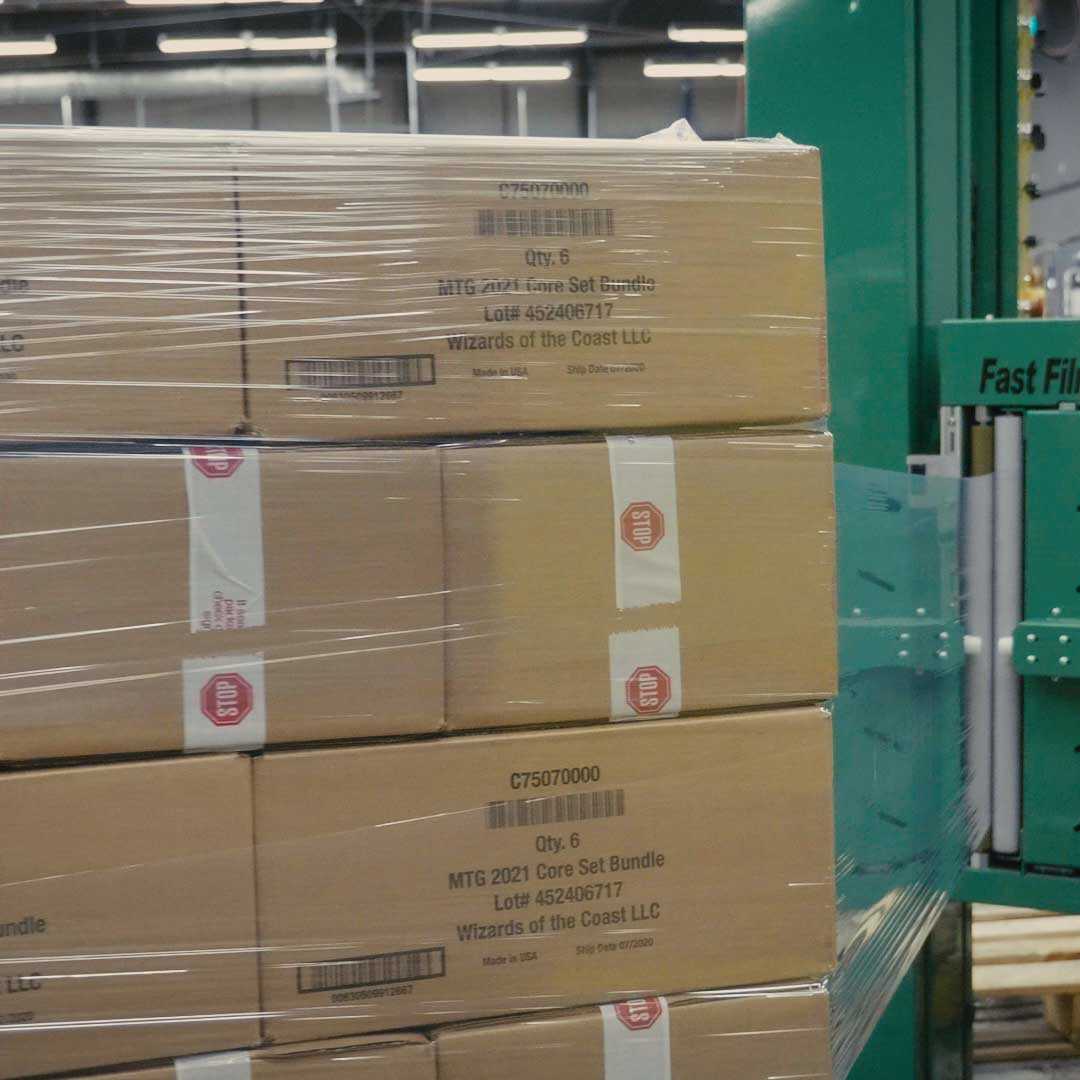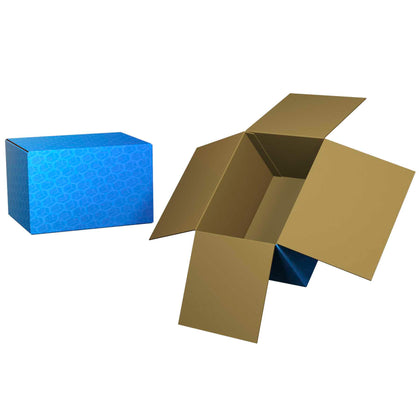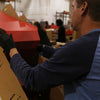

The Complete Guide To Shipping Boxes
Want to take the guesswork out of the best Shipping Boxes for your project? Look no further. A Packaging Expert will cut down on material costs and weight charges by removing the air from your box.
By removing air and selecting the correct size box, you can reduce void fill and corrugated usage, resulting in a smaller carbon footprint and overall savings. You want something more than a manufacturer; you need a packaging partner.
A packaging expert isn’t just experienced in their own industry, but yours too. They work with industry leaders across the country and deliver a myriad of services to each of them.
Finding the right partner for your Shipping Boxes can simplify your supply chain, and open up new business opportunities.
That allows them to make more informed decisions on shipping boxes and methods.
This guide should tell you everything you ever wanted to know about Shipping Boxes and working with a single-source supplier.
Table Of Contents
Step 1: Determine Your Shipping Box Needs
What type of Shipping Box do you need?
The type of packaging you need will vary depending on your product. This will be based on the size, shape, and weight.
If you have a fragile product, consider a solution that is structurally safe and includes adequate cushioning. Choosing can be tough, but stick to your goals and you'll find the answer.
What are your box dimensions?
Start by measuring the height, width, and length of your product, as well as the dimensions of everything you plan to put inside the box. Then, consider the type and size of any protective packaging inserts you plan to use.
This will determine the size of the box you need.
Pro Tip: Minimize your box as much as possible. This will allow the product to fit safely and avoid any shipping damage. Most importantly, you will reduce your costs and carbon footprint.
Perform a packaging analysis
A trusted partner can analyze your current packaging solution or determine how efficient a new solution can be. You should be working with someone who can provide not just any solution, but the right solution.
How many units do you need?
How much do you plan to sell? Do you need 100 units? 500? 1,000? 10,000? Will you need recurring orders? This will directly affect your costs, and the more you order, the better the deal you can get.
How can this be an extension of your brand?
This is a critical part of Step 1. You want to create packaging that not only fits the product, but also aligns with your overall branding and marketing strategy.
From the color choices, fonts, information, and images you include, these all tell the customer exactly “who you are” and shouldn’t be chosen lightly.
Step 2: Establish Your Shipping Box Budget
There are two types of costs associated with new packaging.
- Visible costs: such as the upfront cost of design and the price of the box itself.
- Hidden costs: such as additional filler, breakage, and more.
Your budget should include the cost of Packaging Supplies and Shipping Boxes. If any kind of packaging fillers are required, you need to account for them.
You can also include a Contract Packager to help with fulfillment or assembly. Read about the Benefits of A Contract Packager.
A successful packaging program needs a budget that considers the economics of the entire process. You should consider the price of your product, your profit margin, anticipated sales, and the length of time you expect your Packaging to be in place.
Setting a budget or at least a range for your packaging helps to make the process more efficient and focused.
Volume Purchasing Shipping Boxes
As with most printed products, you only really get a good value at high purchase quantities, due to the economics of scale.
If you don’t buy in bulk, each package will add an unreasonable amount of expense to each shipment.
If you do buy in bulk, you will not only be putting more money up front for production, but also for storage, transportation between warehouses, and handling.
The higher the sales price of your product, the more you should consider investing in your packaging.
Step 3: Choose a Printing Style
Choosing a printing option involves more than just considering cost factors. The technology has been evolving over the years, and while some older methods remain proven and effective, newer methods have introduced entirely new ways to approach the marketplace.
Here are three printing options to consider:
Lithography Printing
When it comes to commercial printing needs, lithographic printing is the most used solution. And it’s great if you are creating a single design to print over and over without much customization.
One of the main issues is the upfront cost of the printing plate and the lead time for the project.
If you choose Litho, that means you’re committing to waiting and a portion of your budget before you even get your first box.
If you are looking for a high-volume production run of a single design, this is the way to go.
High Speed Digital Printing
Bennett's digital presses are game-changing for the custom retail packaging industry.
While other companies might tell you that Digital Printing isn’t competitive when running large orders, what they aren’t telling you is that with Digital Printing, you can run a variety of designs without needing to pay for, or wait for, new printing plates to be made.
Digital has been growing in the industry, but only a few brands have actually started to take advantage of this huge opportunity.
Imagine creating regional messaging and designs for different stores, as well as seasonal or product variation sizes, all without additional costs.
We were the first to invest in a high-speed, single-pass, direct-to-corrugate, 6-color digital press of its kind in North America. If you want to learn more, check out our page on Digital.
Flexography Printing
Flexographic printing can reduce your printing costs, and tooling costs are typically lower. It has a fast turnaround time that can use both water and oil-based inks.
However, compared to Lithography and Digital Printing, Flexography has noticeably lower printing quality.
It cannot create photo-quality images, and smooth colors or gradients will exhibit visible banding.
The colors aren’t as vibrant or crisp as those of the other two options, but this printing format is inexpensive. It also doesn’t require a lot of attention to detail, and can be produced at a very high speed.
Specialty Machinery
At Bennett, we offer a diverse range of machinery that sets us apart in the marketplace.
Jumbo Flexo 2-Color
Need large refrigerator sizes? No problem. We have one of the only Jumbos in North America, and it gives us the ability to make super wide designs!
- Large Format Sizes
- 2-Color Capable
- One of the only machines in North America
Hycorr 7-Color
This press has won us a number of awards thanks to its ability to print high-quality graphics at an insanely high volume. Combined with our in-house ink kitchen technicians, you get trusted, high-quality results every time.
- UV Capable
- State-of-the-art Ink Matching
Specialty Folder Gluer
Our Bahmüller Turbox & Top-matcher is perfect for specialty packaging jobs. Allowing up to three separate substrates to be fed at high speed to create innovative packaging designs. This has helped us reduce hand labor and open the door to sustainable packaging solutions.
- Up to 3 Substrates
- Retail Ready Packaging
- Ability to glue/join any design
Step 4: Does Your Box Need Paper Coating?
A coating can be applied to complete your packaging’s look - while offering additional protection and even enhancement.
Matte Lamination
While the overall effect of matte laminated surfaces is understated and elegant, it creates a noticeably high-end and sophisticated feel to your packaging.
Gloss Lamination
This provides a beautiful shine, vibrancy, better image contrast, and more vibrant depth of color. Gloss lamination even provides better protection against things like moisture and dust.
AQ Coating
AQ Coating is a clear, water-based coating that dries quickly. It’s environmentally friendly, making it an excellent choice for food, household, and fast-moving products. It has a very faint gloss finish compared to UV coating and lamination.
UV Coating
This can create a similar look to lamination, but the difference is that UV is applied directly to the material. Packages are UV-coated using a flood or spot application. Spot coating is applied to a specific area of the package, while flood (or overall) coating indicates a coating applied to the entire package.
Spot UV is generally screen-coated in thick amounts for maximum visual "pop" and rub resistance. While flood is usually roller coated in relatively smaller quantities.
Varnish
Varnish increases the perceived quality of the product. However, it offers a lower degree of protection in comparison to aqueous coating and UV coating. They are also susceptible to yellowing over time.
Varnishes are also not particularly eco-friendly. This is the least popular option.
There are other options, but these are the most popular.
Step 5: Creating A Dieline
Now that you have your design in place, it’s time to transfer it to the structure template, also known as the dieline.
There are a few dieline and artwork preparation and requirements that need to be noted by your designated designer, even if your artwork is done and ready to go.
If you don't have a designer, your packaging company will take care of this for you.
Dielines
A dieline is typically created on a computer with a designing tool such as Adobe Illustrator, Artioscad, or Adobe InDesign. Measurements need to be precise to save time and money.
Step 6: Preparing The Artwork
Working with your packaging partner, you will deliver high-resolution quality artwork for printing. It’s best to speak directly with the company you are working with to determine the exact specifications for their CMYK printing.
At Bennett, we offer access to our award-winning Creative Services to help you design, prep, and deliver all your artwork to our manufacturing teams - and ensure your project details are correct every step of the way.
Pro Tip: Need more clarification on preparing your artwork? Reach out to Bennett if you need help with any of your designs!
Step 7: Creating Prototype Shipping Boxes
You should always request a prototype box to confirm the structure and printing for final production, especially if you have a very large order.
Once the prototype is created, it can be delivered to you in person or via mail carrier.
We have an array of equipment in our Creative Services Department that matches the exact quality of our High-Speed Digital Printers, allowing you to quickly produce prototypes and move your project along to production.
Step 8: Production + Shipping
Once you finalize everything, your product packaging is ready for full production. You can sit back, relax, and wait for the arrival of your packaging!
Receiving your shipment all depends on your requested timeline, the size of the package, the method of delivery, etc.
It varies depending on your situation, but your account manager will keep you informed about the production and shipping process, ensuring you stay on track.
Pro Tip: If you need to order on a consistent basis, speak to our packaging specialists to map out your inventory expectations and schedule. This will make it easier to maintain a healthy inventory flow and allow the manufacturer to know exactly when you need it.
Supply Chain Solutions
Once you have your Packaging design locked and production is ready, you need to create a Supply Chain plan.
You should consider the entire process, from manufacturing and storage to retailer delivery, etc.
Key Questions:
- Will your Packaging be shipped fully assembled or KDF?
- What is the weight of your Packaging with your Shipping Box and Supplies?
- Where will you store your Packaging?
- What is the cost for Packaging Supplies?
- Fulfillment costs, if any?
- How will you account for returns?
Key Things To Keep Track Of
Track if you have enough packaging to meet demand. It’s crucial to keep a tight inventory of the packaging you have at your fulfillment center, and whether it is enough to meet the demands of the season.
Did you ever run out and have to purchase more? Did that incur any delays and costs?
Did you have a surplus? Was it of only a specific size?
Try to keep track and keep packaging inventory levels in line with demand.
Record Breakage
Were your shipments kept safe? This is the priority for any fulfillment center. You should set a tolerance level for the amount of breakage that you can absorb, and then track whether you are meeting that goal.
If you aren’t, you should consider adding more packaging filler or using a different carrier.
ISTA Testing For Shipping Boxes
International Safe Transit Association (ISTA) testing helps brands create packaging that will protect against shock, vibration, compression, and any other atmospheric hazards in the distribution environment.
This allows you to eliminate the need for multiple trial shipments and get your products to market faster while also ensuring their survival.
It can also help you negotiate lower freight and cargo insurance rates due to the confirmed lower risk of shipment damage.
We conduct a range of shipping tests (including vibration and drop tests) to ensure you are certified and ready to go. We partner with you throughout the entire process and ensure that there are no surprises- and if there are, we are prepared to resolve them.
If the packaging is not tested and not approved by the carriers in advance, then they will not pay any damage claims. Without approval, it may also put your other approved packages at risk.
Bennett Makes Custom Shipping Boxes
Bennett is a premier packaging and retail displays manufacturing company striving to protect and promote our clients' products with customized corrugated solutions. When you work with us, you’re part of the family. We will partner with you every step of the way.
With our fully integrated design-to-delivery process, we can be the single-source supplier. We are an award-winning manufacturer of virtually anything corrugate. We offer everything from plain brown shipping boxes to sophisticated, high-graphic printed point-of-purchase displays, and everything in between.
Frequently Asked Questions
What are Shipping Boxes?
A shipping box is packaging made of corrugated fibreboard. The box has flaps that can be folded and secured with adhesive or tape. Also known as a corrugated box or cardboard box.
What Shipping Boxes do you have?
Visit our Shipping Boxes page for more information about our offerings.
Do you have more than one location?
Yes! We have facilities across North America. Take a look at our Contact Page for the locations.




